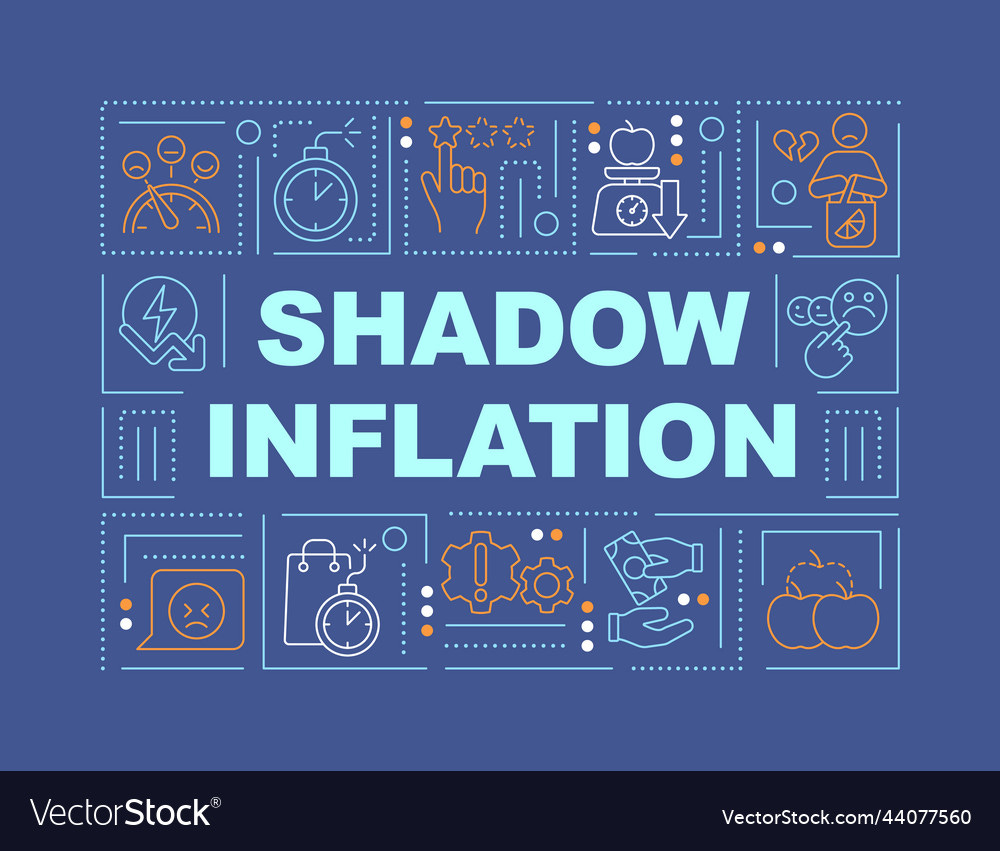🛸 Shadow Inflation - Beyond Official Metrics
Investigate how official inflation metrics might underestimate real-world inflation and its implications for investors
💡 New on Macro Mornings? Start here
🛸 Macro Deep Dives is created for those who crave in-depth understanding of macroeconomic trends.
⭐️⭐️⭐️⭐️⭐️ Join Macro Mornings Premium
🔸 You’ll receive Exclusive, high-quality macro investment opportunities that focus on long-term growth, diversified risk, and the potential to outperform during various economic cycles.
🔥 Only 5 Spots Left - Lock in Your Lifetime Discount Now 🔥 [30% OFF for Life]
📝 Excellent score on TrustPilot
You can still start your 7-day FREE trial and explore everything Premium has to offer - full access.
Dear all,
Official inflation metrics like the Consumer Price Index (CPI) are widely used to measure the cost of living.
However, these numbers might not always reflect the real inflation experienced by households and businesses.
Shadow inflation-the hidden rise in costs or decline in product quality-often goes unnoticed in official data but has significant implications for investors. 🌍📈
Let’s explore how shadow inflation works, why it matters, and how to position your investments to mitigate its impact. ⏳
What Is Shadow Inflation?
Shadow inflation refers to the subtle ways prices increase that are not fully captured by official metrics.
It occurs when manufacturers reduce package sizes while keeping prices the same, a phenomenon known as shrinkflation.
For example, a cereal box that once contained 500g now contains 450g but still costs $4. 🍞📦
Another form of shadow inflation is a decline in service quality.
Airlines may reduce legroom, charge extra for baggage, or cut in-flight amenities without lowering ticket prices.
Similarly, hidden fees, such as resort fees in hotels, add 10-20% to the total cost. 🏨💸
These subtle changes lead to higher costs for consumers, even if official inflation data shows only modest increases.
Why Official Metrics Underestimate Real Inflation
Official inflation measures like the CPI track a basket of goods and services but have limitations.
Substitution bias occurs when consumers switch to cheaper alternatives as prices rise, making inflation appear lower.
Hedonic adjustments lower reported inflation if product quality improves, even if prices rise.
Additionally, the CPI may not reflect individual spending patterns, especially when housing, healthcare, or education costs rise faster than the overall index. 📊💰
Real-World Examples of Shadow Inflation
Housing costs often rise faster than reported.
While official rent inflation might show a 5% annual increase, actual rents in cities like New York and San Francisco have risen by 10-15%.
In healthcare, insurance premiums, co-pays, and medication costs have outpaced CPI, averaging 6-8% annually. 🏥💊
College tuition and fees have surged by over 25% in the past decade, far exceeding reported inflation rates. 🎓💵
Implications for Investors
Shadow inflation can erode purchasing power and investment returns.
When real inflation is higher than official metrics, traditional fixed-income investments may struggle to keep up, and cash savings lose value over time.
Long-duration bonds are particularly vulnerable to negative real returns. 📉
Equities can also suffer if companies face higher input costs and can’t pass those costs to consumers, leading to profit margin compression.
On the other hand, real assets like real estate, commodities, and infrastructure tend to perform better when inflation is underestimated. 🏠
How I’m Positioning for Shadow Inflation
To protect against shadow inflation, I’m focusing on investments that can outpace rising costs and preserve purchasing power.
Gold, commodities, and real estate provide a hedge against inflation. These assets have maintained their value when consumer prices creep higher. 🌱💪
In equities, I favor companies with pricing power-those able to pass on higher costs to customers without losing demand.
Sectors like healthcare, consumer staples, and energy often perform well during inflationary periods.
I’m also maintaining exposure to inflation-protected securities like TIPS (Treasury Inflation-Protected Securities), which adjust for inflation and help mitigate rising costs. 📈💼
Diversifying into international investments offers additional protection, as countries with lower inflation rates or stronger currencies can provide stability and growth potential. 🌍💱
🔒 Bonus Lesson to Remember
Shadow inflation reminds us that official metrics don’t always tell the full story.
Staying vigilant and understanding real-world price changes helps protect our wealth from the hidden erosion of purchasing power. 🔍💰
For me, recognizing shadow inflation means positioning investments to thrive even when costs rise quietly.
Alessandro
Founder of Macro Mornings
⭐️⭐️⭐️⭐️⭐️
What You’ll Get by Joining Macro Mornings Premium
🔸 Regular deep dives into economic indicators and geopolitical developments shaping today’s markets.
🔸 Exclusive, high-quality macro investment opportunities that focus on long-term growth, diversified risk, and the potential to outperform during various economic cycles.
🎁 Exclusive Offer: 30% OFF for Life!
Becoming a Macro Investor Premium, You’ll Gain Access to:
Well-researched insights help you make smarter and more informed decisions .
All the tools you need right at your fingertips to build, track, and grow a resilient portfolio - helping you retire earlier and live life on your own terms.
Stop guessing, start investing with confidence, and enjoy a life free from financial constraints.
👋 Read my Financial Story
✍ FREE
📚 Get your E-book FREE 👉 10 Simplified Strategies for Investors
🎁 Get your Mentorship FREE here
🏆 PRO
🔏 Become a Macro Investor here | 💰 30% Off for Life - [🔥 Only 6 Spots Left! 🔥]
🔑 Get your Mentorship PRO here
📚 The Art of Financial Freedom 👉 51 Macro Lessons to Success Your Future
💻 SOCIAL
🎙 PODCAST
🙏 YOUR VOICE MATTERS - Help me
📝 TrustPilot - Leave a review and share your experience - I’d be truly grateful!
📣 Feedback Form - Help me improve Macro Mornings by sharing suggestions!
Disclosure
This material is not intended as an offer or solicitation for the purchase or sale of any financial instrument. This material has been prepared for informational purposes only. Any forecasts contained herein are for illustrative purposes only and are not to be relied upon as advice or interpreted as a recommendation.






